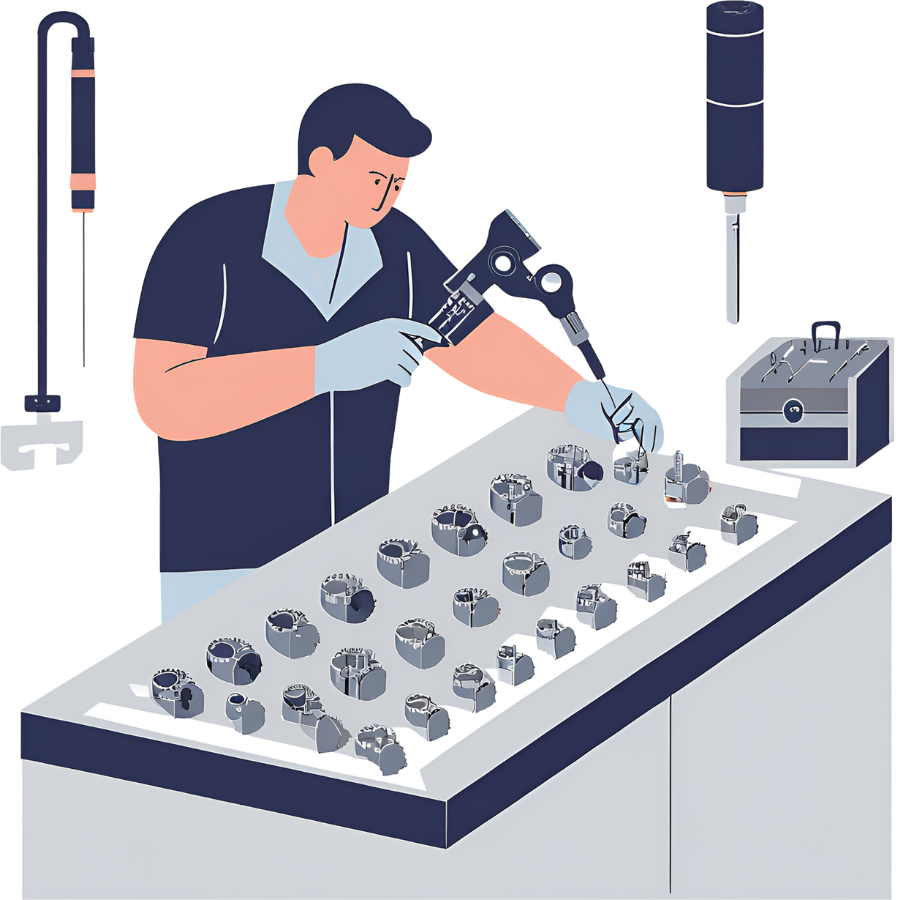
Internal Micrometers or internal micrometers are internal measuring instruments used to calibrate and inspect the quality of workpieces or measuring instruments in various industries. This device plays an important role in controlling quality standards because it can measure dimensions with high precision at the micron level. Such precision instruments are often used in applications related to manufacturing with strict requirements, such as automotive engineering, electronic component manufacturing, and the aviation industry.
Components and working principles of Internal Micrometers
Internal Micrometers have important components that help to make accurate measurements, including:
- Measuring Head : The part that directly contacts the workpiece. This measuring head may have different shapes and sizes depending on the characteristics of the workpiece to be measured.
- Spindle : The part that rotates to move the measuring head in or out of the workpiece, allowing the measurement size to be expanded or contracted as needed.
- Scale : Displays the measured value, which may be both analog and digital.
- Thimble : The part used to rotate to adjust the measurement size to be more detailed.

Internal micrometers work by expanding or contracting the measuring head until it touches the surface of the hole or slot to be measured. The reading is recorded from the displayed scale, which can display values as detailed as microns.
Using Internal Micrometers in Calibration
Calibration with internal micrometers is a process that requires precision and accuracy in every step. In general, calibration is done to confirm that the measuring tool or workpiece has the correct size according to the standards specified in each industry.
Steps of use
1. Check the condition of the micrometer
Before use, check that the tool is in good condition, no damage or dirt that will affect the measurement accuracy. If there is dust or residue, it should be cleaned with a clean cloth and non-corrosive lubricant.
2. Setting and measurement
- Select the appropriate probe for the size of the hole to be measured.
- Rotate the spindle to expand or contract the probe until it touches the surface of the workpiece without pressing too hard to obtain the most accurate measurement value.
- Read the value from the scale or digital display and record the data for analysis.
3. Systematic calibration
Measuring multiple points in the same hole or in multiple positions will help check whether the size of the workpiece complies with the standard. Measuring a single point may not be enough if the hole is distorted or uneven.

Maintenance of Internal Micrometers
Since Internal Micrometers are high-precision tools, maintenance of these tools is very important so that the tools can work accurately and for a long time.
1. Cleaning after use
After using the micrometer It should be wiped clean with a clean cloth every time to prevent dust or chemicals that may cause wear and tear or corrosion.
2. Proper storage
Store the micrometer in a box or area free from moisture and dust to prevent damage to the instrument. Avoid storing it in areas with sudden changes in temperature or humidity.
3. Periodic inspection of the instrument
The instrument should be sent for inspection and calibration to the specified standard by an expert within an appropriate period of time to ensure that the measurement value remains accurate.

Precautions for use
1. Do not apply excessive force when measuring, as this may damage the instrument and cause inaccurate measurement values.
2. Avoid using it in environments with high dust or humidity, which may damage the instrument.
3. Use an internal micrometer that is appropriate for the size of the workpiece. If the instrument is not suitable, the measurement may be inaccurate.